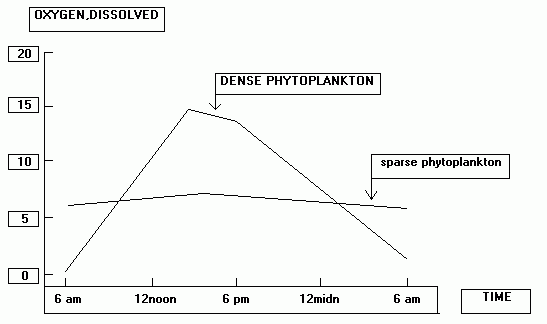
Dissolved oxygen is the most important environmental factor influencing health and productivity of farmed tilapia. Low oxygen level can result in fish mortality, reduced growth or act as a stressor so that fish have increased susceptibility to infection. There are important interrelationships between dissolved oxygen, certain water quality variables and factors within the fish themselves that have implications for fish health. Any factor or conditions that reduces diffusion of oxygen through the gill lamellae (all forms of gill disease), impairs oxygen transport (anemia, nitrite toxicosis) or blocks oxidative metabolism (hydrogen sulfide toxicosis) will be exacerbated by low environmental dissolved oxygen.
If the culture water contains significant quantity of phytoplankton, the dissolved oxygen level will usually fluctuate on a diurnal cycle. During periods of high sunlight, oxygen is released into the water by phytoplankton as a byproduct of photosynthesis. Thus, dissolved oxygen level will be greatest in the late afternoon and lowest just before sunrise. This feature largely explains why dissolved oxygen deficiency kills occur mainly at night and, not uncommonly, with an onset in the early morning hours (see figure below).

Through grow-out as fish standing crop and feed application are increased, the probability is greater that low oxygen crises will occur. Another variable to consider is oxygen stratification which may arise in deep ponds that are not well mixed. With stratification, the dissolved oxygen level is high near the water surface but very low in the water close to the pond bottom. This feature should also be taken into consideration when planning were to sample water for oxygen readings. Oxygen and termal stratification often occur together.
Also: